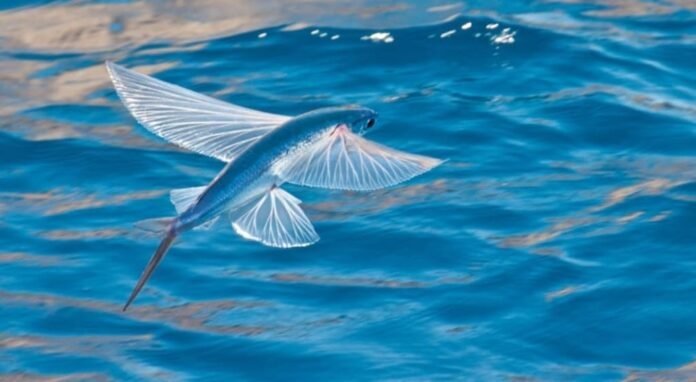Meet the garnai fish, a remarkable species under the genus Hypseleotris that has captivated the attention of scientists and nature enthusiasts alike. Commonly known as gudgeons, these freshwater fish are native to Australia and neighboring regions, and they possess a unique combination of abilities that make them one of the most intriguing species in the aquatic world. Not only can garnai fish swim and walk on land, but they also exhibit behaviors that have earned them the nickname “The Flying Fish.”
A Diverse Genus
The genus Hypseleotris comprises several species, each with distinct characteristics and habitat preferences. Among the notable members are the Western carp gudgeon (Hypseleotris klunzingeri), Purple-spotted gudgeon (Hypseleotris spp.), and Empire gudgeon (Hypseleotris compressa). These species collectively contribute to the rich diversity within the genus, making garnai fish a subject of ongoing scientific interest.
Habitat and Adaptability
Garnai fish are predominantly found in freshwater environments such as rivers, streams, billabongs, and lakes. They thrive in habitats with sandy or gravel bottoms, often surrounded by aquatic vegetation that provides essential cover. These fish demonstrate remarkable adaptability, surviving in both stagnant and flowing waters, showcasing their versatility across various aquatic settings.
Striking Appearance
One of the most captivating aspects of garnai fish is their vibrant appearance. Their elongated bodies are adorned with vivid hues of red, orange, yellow, and blue, making them a visual delight. Some species also display intricate patterns of spots or stripes, further enhancing their allure. These striking features make garnai fish a sought-after sight for aquarists and nature enthusiasts.
Size and Feeding Habits
The size of garnai fish varies depending on the species and environmental factors. Typically, they range from 5 to 15 centimeters (2 to 6 inches) in length, though some species can grow as large as 20 centimeters (8 inches). Garnai fish are omnivorous, feeding on a diverse diet that includes small invertebrates like insects, worms, and crustaceans. They also consume algae and plant matter, playing a vital role in nutrient cycling within freshwater ecosystems.
Fascinating Reproductive Behaviors
Garnai fish exhibit intriguing breeding behaviors, particularly during the breeding season. Males undergo dramatic color changes, developing brighter hues to attract females. Once a mate is selected, the pair engages in elaborate courtship displays, culminating in the spawning of eggs in shallow waters. Parental care is crucial for the survival of the offspring, with some species showing high levels of care from one or both parents.
Challenges and Conservation
Like many freshwater species, garnai fish face numerous threats, including habitat loss, pollution, and the introduction of non-native species. Changes in water quality and temperature further exacerbate these challenges. Consequently, several species of garnai fish are classified as threatened or endangered, underscoring the need for conservation efforts to protect their populations and preserve their habitats.
Ecological Importance
Garnai fish play a critical role in maintaining the health of freshwater ecosystems. They contribute to nutrient cycling and serve as prey for larger fish and birds. Their presence is often indicative of a healthy aquatic environment, making them valuable indicators of ecosystem health.
Cultural and Research Significance
In addition to their ecological importance, garnai fish hold cultural significance for some indigenous communities in Australia, featuring in traditional stories, art, and practices. They are also of great interest to researchers studying freshwater ecosystems, behavior, and evolution. Ongoing research continues to provide valuable insights into the dynamics of freshwater environments and the adaptation of fish species to diverse habitats.
Aquarium Popularity and Responsible Sourcing
Certain species of garnai fish are popular among aquarium enthusiasts due to their vibrant colors and engaging behaviors. However, responsible sourcing is crucial to prevent overexploitation of wild populations and ensure their conservation.
Ongoing Taxonomic Studies
The taxonomy of the genus Hypseleotris is still undergoing study and revision, with genetic and morphological research shedding light on the evolutionary relationships within the genus. These studies occasionally lead to the discovery and reclassification of species, adding to the intrigue surrounding garnai fish.
Summing Up
Garnai fish are a fascinating group of freshwater fish with unique characteristics that set them apart from other species. Their ability to swim, walk, and seemingly “fly” makes them a subject of wonder. Their vibrant colors, intriguing behaviors, and role in freshwater ecosystems make them invaluable to both scientific research and conservation efforts. Understanding and preserving these remarkable fish is essential for maintaining the biodiversity and ecological balance of freshwater environments worldwide.


